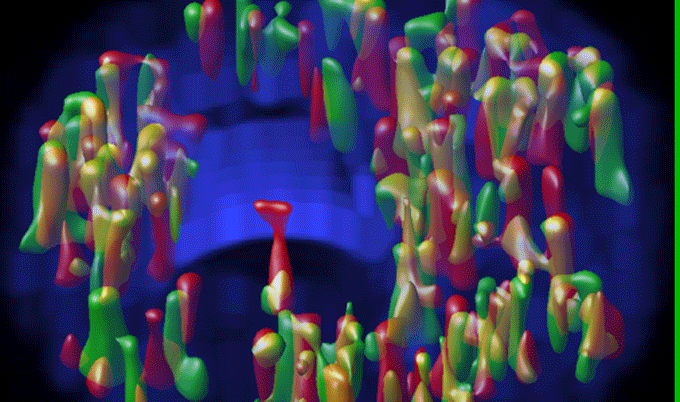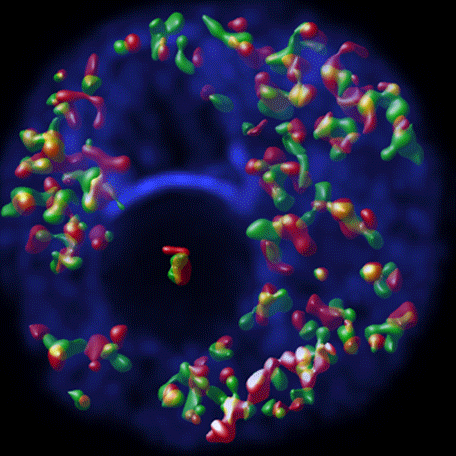AEP discovery
Enzyme AEP’s importance to immunity discovered
Published on: 24 July 2018
The importance of the enzyme AEP as a key regulatory of the immune system has been discovered in new research from Newcastle University.
Factors that regulate the immune system play a key role in holding the immune system in balance. Too active and there is a danger of developing autoimmune diseases such as rheumatoid arthritis. Too passive and cancer cells and infections are free to grow. A key regulator is the inhibitory co-receptor PD-1. Antibodies to this co-receptor, known as checkpoint inhibitors, have been successful in activating the immune system to attack cancer cells, although their responses are not always successful or long lived.
In work published in the journal Immunity, the researchers led by Dr Shoba Amarnath investigated factors that were inhibited by activating PD-1 in immune cells. One such factor was the enzyme AEP. In the absence of AEP, mice were resistant to developing autoimmune disease but susceptible to tumour cells.
Dr Amarnath explains: “What we have found in our lab studies is that AEP enhances the effect of these checkpoint inhibitor drugs in advanced melanoma.
“When found in higher levels in the T-cells of the immune system, the supporting AEP worked in combination with the checkpoint inhibitory drug in numerous diseases. It was successful in attacking tumours in skin cancer, by switching on the immune system and in preventing Graft Versus Host Disease, by switching off the immune system.
“Remarkably, while we have known of the existence of AEP, we have not, until now, understood its importance in helping the immune system combat any number of conditions.”
As AEP is necessary for PD-1 inhibitors to enhance immune responses, measuring AEP levels may help identify patients who are most likely to respond to treatment with immune checkpoint inhibitors to PD1 and PDL1.

Understanding why check-point inhibitors work
The research team led by Dr Amarnath has identified how tumour attacking immune cells are made inactive within the tumour microenvironment. CD4+ T helper cells are a type of immune cell that recognize and kill infected cells and cancer cells. These cells are also responsible for autoimmune disease and transplant rejection. Because these cells can kill healthy tissues their activity is tightly controlled by another type of immune cell known as regulatory T cells.
The protective activity of regulatory T cells has been suggested to interfere with immunotherapy treatments. The local environment of some tumours enhancing the formation of regulatory T cells that in turn limits the activation of cancer fighting T cells.
When Dr. Amarnath’s team investigated how PD-1 blocked these cancer fighting cells; they found that PD-1 specifically downregulated a new enzyme called asparaginyl endopeptidase (AEP) which was key to shifting the balance between cancer fighting cells and regulatory T cells within the melanoma tumour environment.
These findings demonstrate that checkpoint inhibitors may not have a beneficial response in the absence of AEP and measuring AEP protein levels in patients prior to treatment with checkpoint inhibitors may provide better response rates to the cancer immunotherapy regimens. Similarly, in mice, when the investigators switched on PD-1 signaling in T cells and blocked AEP, powerful T regulatory cells were generated that were able to prevent inflammatory diseases such as colitis and Graft versus host disease. This discovery may be able to generate new immunotherapy treatments for patients who currently do not respond to standard treatment regimens for colitis and Graft versus Host Disease.
The Newcastle team now intend to progress the work with the intention of taking it into trials in humans.
Reference: PD-1 Inhibitory Receptor Downregulates Asparaginyl Endopeptidase and Maintains Foxp3 Transcription Factor Stability in Induced Regulatory T cells. Stathopoulou et al. doi. https://doi.org/10.1016/j.immuni.2018.05.006
Images show a particle analysis of the Z-stack analysis of a regulatory T cell which shows AEP (red) and Foxp3 (green). The interaction of the two proteins are shown in (yellow).

Latest News
Heading 3 example
Text only. For subheading use ‘Heading 3’
Lorem ipsum dolor sit amet, consectetur adipiscing elit. Donec vel sapien lectus. Aliquam consectetur vitae tortor mattis sodales. Donec id quam id nulla tristique vestibulum. Ut vitae orci aliquam massa varius dapibus. Vivamus aliquet, lorem sit amet semper ultricies, ex tortor molestie felis, at ultrices tellus ligula vitae est. Sed gravida tortor sapien, in iaculis quam vestibulum vel. Duis et quam nec metus pharetra placerat. Donec in tellus pretium ex sagittis posuere. Nunc varius, libero at suscipit commodo, magna lacus facilisis velit, sed pellentesque magna eros vel dolor. Donec pretium neque ultrices, condimentum turpis non, porttitor neque. Suspendisse fermentum at lectus scelerisque mattis. Nam augue justo, iaculis quis euismod et, viverra in elit. Aliquam vitae justo malesuada, sodales urna et, aliquam nunc. Nulla placerat neque quis odio molestie, mattis bibendum turpis pellentesque.



